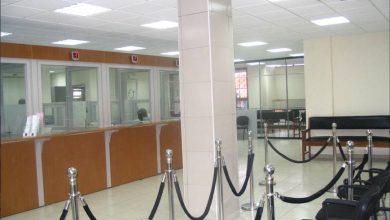Kwacha free-fall spells hard times
Things do not look good for the Malawian consumer in the short to medium term. With Christmas and New Year festivities around the corner, the kwacha is on a free-fall, eroding consumers’ buying power.
From the look of things, at the rate the kwacha is depreciating against the dollar and other trading currencies, the textbook theories used by economists who forecast the kwacha’s stability have given us a raw deal.
Not so long ago, I think in August this year, Standard Bank (Malawi) Limited ruled out the possibility of the economy experiencing massive, or what I prefer to call volatile, depreciation of the kwacha during the lean period we are now in. Personally, like the biblical Thomas Didimus who said he could only believe Jesus Christ had resurrected after putting his fingers in the holes pierced by nails, I had my reservations and doubted our beloved kwacha’s ability to survive the “storm.”
Then came Reserve Bank of Malawi (RBM) Governor Charles Chuka who, during a bankers’ annual dinner and dance in Blantyre, boasted that the central bank had “sufficient” foreign exchange reserves and enough muscle to spare the kwacha massive battering during the lean period. And what has the RBM done so far to stabilise the kwacha?
Ironically, the kwacha is depreciating at a time when we are told that foreign exchange reserves are increasing. This raises the question of what happened to market forces of demand and supply as increasing forex reserves mean that the country has enough forex; hence, this should be reflected in the performance or resilience of the kwacha. Or, are the statistics being “doctored”, as it were?
Coming from none other than the central bank governor, this was one bold statement, especially given the traditional trend of foreign exchange reserves in the country which dwindle at this time of the year when imports of farm inputs exert pressure.
However, about two months later, the tide has changed. The kwacha is being helplessly battered left, right and centre. Today, the kwacha, which officially traded at K339 against the dollar in June, is selling at K432 and still counting.
Traditionally, Malawi’s foreign exchange market has been so predictable and seasonal. What happens is that the kwacha would depreciate from October to March as the country exports less but imports more to meet the demand for agricultural raw material inputs such as fertiliser, chemicals and other farm inputs. Add to this, during the festive season traders also stock up several imported goods for consumers.
This time around, Malawi’s situation is compounded by the aid freeze by the country’s major donors under the banner of the Common Approach to Budget Support (Cabs) who have withheld $150 million (about K60 billion) that was due in the October to December quarter.
To you and me, the kwacha’s free-fall mode spells more hard times as commodity prices, including those for fuel which have the cost-push-effect, will continue skyrocketing. Consumers will now have to dig deeper into their pockets to make ends meet.
The other effect is that the kwacha’s free-fall has eroded the buying power such that what one have in their bank accounts today may not have the same value in the next two or so weeks, going by the speed at which the kwacha is losing its value.
My simple tip though is for consumers to exercise prudence in their expenditures by prioritising their purchases. Do not be influenced by impulse-buying. Draw up budgets and buy what you really need.
Otherwise, the sad reality is that this is December and the lean period for foreign exchange availability is up to March when tobacco, our economy’s major foreign exchange earner, will start bringing in dollars. For now, we just have to brace for more hard times. In fact, the situation is compounded by the donor aid freeze and the fact that with elections drawing closer, parties in power tend to overspend.


